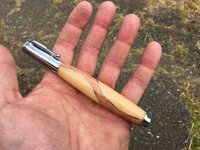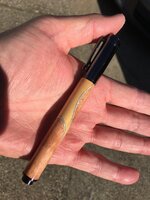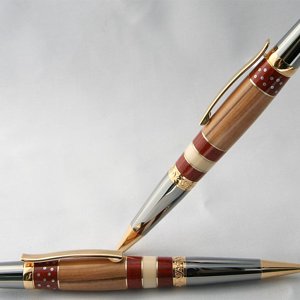DaveTas
Member
Hi Folks,
These were my first attempts at segmenting with aluminium as an accent. As soon as I sanded higher than 200 the aluminium dust would get into the wood. I used denatured alcohol / metho but it stopped working as the dust got finer with higher grit sanding. I ended up going back to 150 and it would clean off again.
Is there a trick I am missing here? I like the look but honestly don't want to try again without a better technique.
Dave
BTW The woods are Tasmanian Huon Pine, and Australian Redgum. I used a CA finish, polished with MM and Maguiers. The kit is Magnetic Cap from Steve's Woodcrafts. https://www.steveswoodcraft.com.au/collections/pen-kits/products/magnetic-cap-pen-kit
These were my first attempts at segmenting with aluminium as an accent. As soon as I sanded higher than 200 the aluminium dust would get into the wood. I used denatured alcohol / metho but it stopped working as the dust got finer with higher grit sanding. I ended up going back to 150 and it would clean off again.
Is there a trick I am missing here? I like the look but honestly don't want to try again without a better technique.
Dave
BTW The woods are Tasmanian Huon Pine, and Australian Redgum. I used a CA finish, polished with MM and Maguiers. The kit is Magnetic Cap from Steve's Woodcrafts. https://www.steveswoodcraft.com.au/collections/pen-kits/products/magnetic-cap-pen-kit



